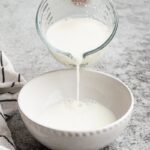Insulin resistance is a widespread health issue affecting nearly half of adults in the United States and poses a significant threat to global health in the 21st century. This condition is a major catalyst in the development of type 2 diabetes, cardiovascular disease, fatty liver disease, neurodegenerative disorders, and obesity-related cancers. Understanding the underlying mechanisms of insulin resistance is crucial for developing effective strategies for prevention and treatment. Dr. Gerald I. Shulman, a distinguished professor of medicine at Yale University and a leading expert in the field, has dedicated his career to studying the molecular basis of this condition. In this article, we delve into the insights shared by Dr. Shulman, exploring what insulin resistance is, its causes, health impacts, and most importantly, how it can be reversed.
Understanding Insulin Resistance: The Basics
Insulin, a hormone produced by the pancreas, plays a vital role in regulating blood glucose levels. It acts like a key, unlocking cells to allow glucose from the food we eat to enter and be used for energy. Insulin resistance occurs when cells become less responsive to insulin’s signal. As a result, glucose struggles to enter cells effectively, leading to elevated blood sugar levels. This condition can affect both individuals who are lean and those who are overweight, highlighting that it’s not solely a consequence of excess body weight.
The Root Causes of Insulin Resistance: From Starvation to Overnutrition
Dr. Shulman’s research has significantly contributed to our understanding of what triggers insulin resistance. His lab discovered a strong link between insulin resistance in the liver and skeletal muscle—key organs for glucose storage—and the accumulation of ectopic lipids, or fat, within these cells.
Interestingly, insulin resistance is not entirely a modern-day ailment. From an evolutionary perspective, it’s a survival mechanism. During periods of starvation, the body breaks down stored fat in adipose tissue, leading to fat accumulation in the liver and muscle. This, paradoxically, induces insulin resistance, which serves a crucial purpose: preserving glucose in the bloodstream to fuel the brain and other glucose-dependent cells like red blood cells when food is scarce. In this context, insulin resistance is a normal physiological response that historically aided survival.
However, in today’s environment of abundant, calorie-rich food, this ancient survival mechanism is triggered by overnutrition. Our “toxic food environment,” as Dr. Shulman describes it, leads to a state where we are constantly activating this starvation response due to excessive calorie intake, resulting in chronic insulin resistance.
The Domino Effect: Health Impacts of Insulin Resistance
The consequences of persistent insulin resistance are far-reaching and detrimental to health. It is the primary driver for the development of type 2 diabetes. Beyond diabetes, insulin resistance is also strongly linked to metabolic dysfunction-associated steatotic liver disease (MASLD), formerly known as nonalcoholic fatty liver disease (NAFLD), where excess fat accumulates in the liver. This can progress to steatohepatitis and potentially lead to end-stage liver disease and even liver cancer.
Furthermore, muscle insulin resistance contributes to elevated levels of plasma triglycerides and LDL cholesterol—the “bad” cholesterol—significantly increasing the risk of heart disease. The impact doesn’t stop there; insulin resistance has also been implicated in obesity-related cancers. When the body is insulin resistant, the pancreas compensates by producing more insulin. Chronically elevated insulin levels can promote tissue growth, and research suggests this can fuel the growth of breast and colon cancers.
Emerging research also points to a strong connection between insulin resistance and Alzheimer’s disease, suggesting it may be a major contributing factor to this devastating neurodegenerative condition.
Reversing Insulin Resistance: Actionable Strategies for a Healthier You
The good news is that insulin resistance is not a life sentence. Dr. Shulman’s research and clinical experience highlight effective strategies for reducing and even reversing this condition.
1. Modest Weight Reduction through Caloric Restriction:
One of the most impactful steps is modest weight loss achieved through calorie restriction. Dr. Shulman’s studies have shown that reducing daily caloric intake to around 1,200 calories can significantly decrease liver fat and reverse liver insulin resistance, effectively managing and even reversing type 2 diabetes. The key takeaway is that you don’t need to reach an ideal or youthful weight. Even a 10% reduction in body weight can make a substantial positive difference in insulin sensitivity and overall metabolic health. This weight reduction is also believed to be a primary mechanism behind the effectiveness of new GLP-1 agonist medications in treating type 2 diabetes.
2. Embrace Regular Exercise:
Exercise is another powerful tool in combating insulin resistance. Dr. Shulman explains that physical activity acts as a separate pathway for glucose to enter muscle cells, bypassing the insulin resistance block. Regular exercise normalizes the storage of carbohydrates as glycogen in muscles, reducing the liver’s conversion of carbohydrates into fat. This, in turn, offers protection against fatty liver disease and improves the plasma lipid profile, lowering the risk of atherosclerosis and heart disease.
Dr. Shulman strongly encourages patients with diabetes or prediabetes to incorporate daily physical activity they enjoy and can sustain long-term. Finding an activity you like is crucial for adherence and making exercise a consistent part of your lifestyle.
The Future is Optimistic
As research deepens our understanding of the molecular intricacies of insulin resistance and new therapies are developed, the future of treating and preventing this condition is promising. By adopting lifestyle modifications such as modest weight loss through calorie management and regular exercise, individuals can take proactive steps to reverse insulin resistance and significantly improve their cardiometabolic health. Dr. Shulman’s work and the ongoing research in the field offer hope and actionable strategies for those seeking to overcome insulin resistance and live healthier lives.
For more information on endocrine and metabolic health, you can visit Yale School of Medicine’s Section of Endocrinology and Metabolism.
